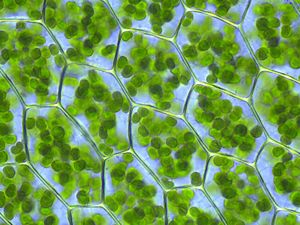Scientists hope to make economically useful biofuels by changing the way plants convert sunlight into chemical energy

For years scientists have been trying to figure out the best way to get plants to produce biofuels. The problem is that the process of photosynthesis, through which plants convert sunlight into easily storable chemical energy, is a very inefficient process. Plants convert only 1% to 3% of sunlight into carbohydrates. This is one of the reasons why corn crops for ethanol production, and other bad ideas for biofuel production, take up such large areas of land. But plants also have many advantages: they absorb carbon dioxide in low concentrations directly from the atmosphere, and when any cell in the plant is damaged, it can repair itself.
Therefore, recently scientists are trying to redesign the process of photosynthesis, so that man can produce a "greener" fuel. The American Agency for Advanced Research Projects in the field of energy, known as ARPA-e, has funded 10 such projects so far, and most of them use genetic engineering to change the operating instructions of the plant coded in DNA and determine its growth, the nature of its pigments, etc. The largest grant, more than $6 million, was given to the University of Florida for research aimed at engineering pine trees to produce more turpentine, which could be used as fuel. Another project, under the management of the company Arcadia Biosciences from the city of Davis, California, is intended for the first time in history to make fast-growing grasses, such as millet, produce oil.
The scientists in the future may create a black plant that will absorb sunlight in all its colors, or a plant that will use light of a different wavelength to drive different stages of the photosynthesis process. Today the plants use the same wavelength in all stages of the process. A transgenic plant that produces biofuel may have smaller leaves, so that less energy is wasted on its growth, or it may not store the energy in the form of sugars, but immediately turn it into hydrocarbons, which man can use as fuel.
The scientists participating in the program, known as PETRO (English acronym for "engineered plants to replace oil") will also have to face challenges such as limited water supply for irrigation and public suspicion towards the products of genetic engineering. They will also have to compete with researchers who seek to completely replace photosynthesis, such as in the electro-fuel project, which ARPA-e itself promotes and is designed to cause bacteria to produce hydrocarbons, or in studies that intend to build artificial leaves that will use the electricity produced by solar panels, to break down water molecules into oxygen and hydrogen that can to be used as fuel. Today, it is not enough to just be a green plant.

One response
I liked the idea of using light of different wavelengths to drive different steps in the photosynthesis process. If the claim that today the plants use the same wavelength in all stages of the process, is a correct claim, then this change is a significant evolutionary leap in the plant world.